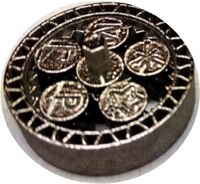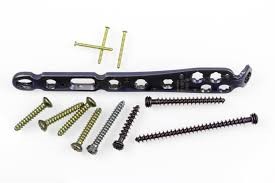Research at the Centre for Neutron Scattering
Purifying water with seeds from the Moringa trees, understanding how ozone pollution damages the lungs, improving bone and dental implants and investigating the crystallisation conditions on printed glassy metals - these are some examples of our research using neutron scattering.
Examples of research
Some examples of our research using neutron scattering:
- Investigating the crystallisation conditions of printed glassy metals.
- Purifying water with seeds from the Moringa tree.
- Understanding how ozone pollution damages the lungs.
- Improving bone and dental implants.
See below for more details regarding these research areas.
There are also research focusing on improving the neutron scattering techniques. For instance, to improve the instruments used for neutron scattering. More information regarding the Olsson Block and research behind it.

Investigating the crystallisation conditions of printed glassy metals
A study was published in August 2021 on glassy metals. The team led by Martin Sahlberg, Centre for Neutron Scattering, has been preparing these by additive manufacturing (also known as 3D-printing) and aimed to investigate what conditions could lead to crystallisation. Small-angle scattering could follow this process but led to a further important discovery. Overall scattering from the material is low and the transmission is high. This makes the metal (AMLOY-ZR01) and the process a good candidate to produce windows and other, even complex, components of neutron instrumentation.
More details can be found in:
- A. Ericsson et al. "Crystallization of a Zr-based metallic glass produced by laser powder bed fusion and suction casting", Journal of Non-Crystalline Solids (2021). https://doi.org/10.1016/j.jnoncrysol.2021.120891
Purifying water with seeds from the Moringa tree
Studies have shown that the extracts from seeds of the Moringa oleifera tree can be used for water purification. In our study, we have been able to show that the Moringa seeds can also be used for separation of different materials.
More information regarding the research on the Moringa tree.


Understanding how ozone pollution damages the lungs
It is known that ozone is harmful to breathe in. We are now able to show which molecules in the protective layer of the inside of the lung are affected by ozone. With the help of neutron experiments, it can be revealed in more detail what is happening.
More information regarding the research on ozone pollution and lung damage. (External link to a news article in Swedish.)
Improving bone and dental implants
A new responsive coating for implants used in surgery has been developed to improve their integration into bone and to prevent rejection. Neutron scattering experiments at the Institut Laue-Langevin (ILL) in Grenoble, France, have shown how a protein that promotes bone growth binds to this surface and can be released in a controlled way.
More information regarding the research on implants. (External link to a news article.)

